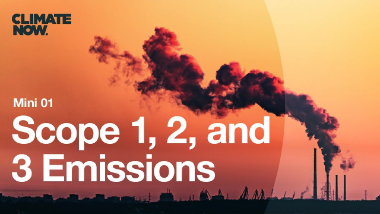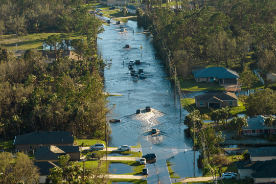Business
Scopes 1–3 Made Simple A plain-English walk-through using GHG Protocol with sector examples.

Greenhouse gas (GHG) reporting has become a requirement for companies under growing pressure from regulators, investors, and customers to show how they are managing climate impact. Yet the technical jargon around Scopes 1, 2, and 3 emissions often confuses even seasoned managers. Using the GHG Protocol as the global standard, the picture becomes much simpler: Scope 1 covers emissions you directly control, Scope 2 covers the energy you buy, and Scope 3 covers everything else in your value chain. Understanding these three buckets—and applying them with sector-specific examples—is the key to credible climate disclosure.
Scope 1 emissions are the most straightforward: they come from sources a company owns or controls. For a manufacturing firm, this means emissions from on-site boilers, furnaces, or company vehicles. For airlines, Scope 1 is the jet fuel burned in their planes. For oil and gas companies, it’s the methane leaks or flaring from their fields. These are the emissions most within a company’s immediate influence, and reducing them typically involves efficiency improvements, switching to cleaner fuels, or deploying new technologies.
Scope 2 emissions arise from the electricity, steam, heat, or cooling a company purchases. For example, a bank’s office emissions or a retailer’s store lighting largely fall under Scope 2. While companies don’t produce these emissions themselves, they occur at the power plants generating their energy. Shifting to renewable electricity through power purchase agreements (PPAs) or renewable energy certificates (RECs) is the most common strategy for Scope 2 reduction.
Scope 3 emissions are where complexity—and impact—really lie. These cover all other indirect emissions across the value chain, both upstream (from suppliers) and downstream (from customers). For a food company, this includes emissions from agriculture, transport, and packaging. For automakers, Scope 3 is dominated by the fuel burned in cars sold to customers. For banks and insurers, it means “financed emissions”—the emissions from projects and companies they fund. In most industries, Scope 3 accounts for the vast majority of total climate impact, making it both the hardest and most important category to tackle.
The GHG Protocol provides structured guidance on how to measure and report across all three scopes. Importantly, it emphasizes transparency, consistency, and comparability. Companies are expected to disclose data sources, calculation methods, and boundaries so that stakeholders can assess the reliability of their numbers. While Scope 1 and 2 are relatively straightforward to quantify, Scope 3 often involves estimates, proxies, and evolving methodologies, which makes data quality and disclosure of assumptions critical.
Sectoral differences matter. A utility’s disclosure will be dominated by Scope 1 (generation emissions), while a tech firm’s footprint is largely Scope 2 (electricity-hungry data centers). A consumer goods company, by contrast, faces Scope 3 dominance, since raw materials, supply chains, and customer use-phase emissions dwarf in-house operations. By showing these examples, the Scopes framework becomes less abstract and more relevant to everyday business decisions.
The real value of understanding Scopes 1–3 lies in strategy. Companies that know where their emissions sit can prioritize investments, set realistic reduction targets, and engage stakeholders credibly. Regulators and investors increasingly expect such clarity, while customers reward brands that demonstrate transparent climate action. Put simply, mastering the basics of Scopes 1–3 through the GHG Protocol is no longer a technical exercise—it is a competitive necessity in the era of climate accountability.

Sarah Thompson
COMMUNITY MANAGER
At least 20 people killed in Russian glide bomb attack on village in eastern Ukraine

Transition vs. Physical Risk A decision tree for which risk dominates by industry.

Getting Assurance-Ready — Controls and evidence trails for sustainability data.
trending posts

TOP Categories
Google Web Reporters












3 comments
David Bowie
3 hours agoEmily Johnson Cee
2 dayes agoLuis Diaz
September 25, 2025